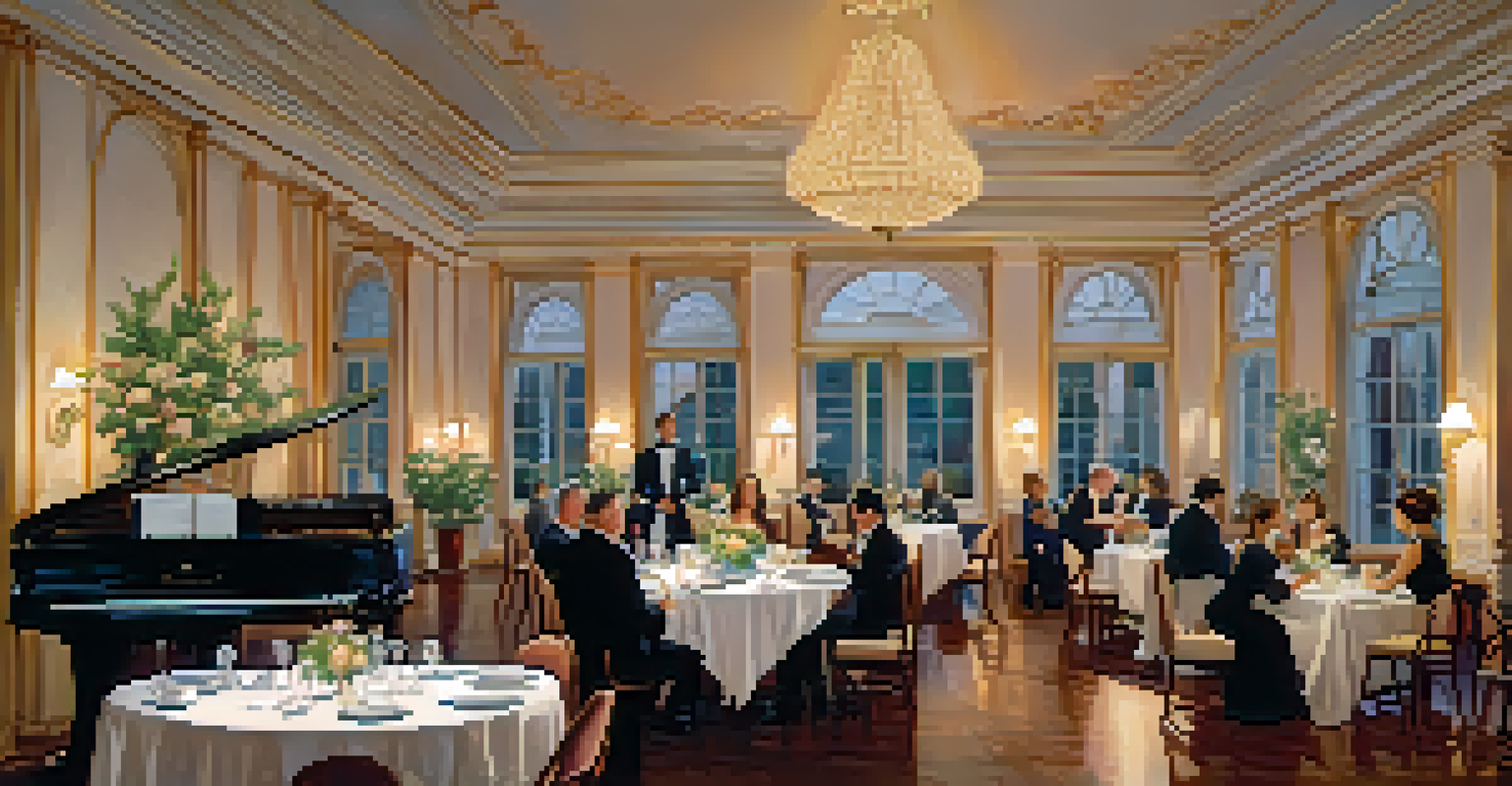The Science Behind Music's Influence on Consumer Behavior

Understanding the Psychological Impact of Music
Music has a profound effect on our emotions and behaviors. Studies show that certain melodies can evoke feelings of happiness, nostalgia, or even excitement. This emotional connection is what brands aim to tap into when choosing the right soundtrack for their marketing campaigns.
Music can change the world because it can change people.
For instance, think about how a catchy jingle can stick in your mind long after you've heard it. This is because music not only grabs attention but also aids memory retention, making it easier for consumers to recall a brand when making purchasing decisions.
Furthermore, the tempo and style of music can influence how we perceive time and engage with products. Upbeat tempos may encourage quicker purchasing decisions, while slower melodies can lead to more deliberate consideration, allowing brands to manipulate our shopping behavior subtly.
The Role of Genre in Shaping Consumer Preferences
Different music genres evoke different emotional reactions, which can greatly influence consumer preferences. For example, classical music often creates an atmosphere of sophistication, making consumers more likely to purchase high-end products. On the other hand, pop music can create an energetic and fun vibe, appealing to a younger audience.

Brands often tailor their musical choices to align with their target demographic. A trendy clothing store might play the latest hits to attract a youthful crowd, while a fine dining restaurant may opt for soft jazz to enhance the dining experience.
Music Shapes Consumer Emotions
Music has a profound impact on emotions, influencing consumer behavior and brand recall.
This genre alignment helps create a cohesive brand identity. When consumers resonate with the music played, they are more likely to feel a connection with the brand, leading to increased loyalty and repeat purchases.
How Tempo Affects Shopping Behavior
The tempo of music can significantly impact how consumers behave while shopping. Research indicates that fast-paced music can encourage quicker decisions, causing shoppers to buy more in a shorter amount of time. This is particularly useful in environments like grocery stores, where efficiency drives sales.
Without music, life would be a mistake.
Conversely, slower music can create a relaxed atmosphere, inviting consumers to linger and engage more deeply with products. Think about those cozy cafes where soft music plays; it makes you want to stay longer and perhaps enjoy another cup of coffee.
By understanding tempo, retailers can craft experiences that align with their sales goals. Whether they want to speed up sales or encourage customers to browse longer, the right tempo can be a game-changer in consumer behavior.
Music as a Tool for Brand Positioning
Music is a powerful tool for brand positioning, helping to communicate a brand's values and personality. For instance, a brand that aims to project an image of luxury might use orchestral music in its advertisements, while a brand focused on youth and fun might opt for upbeat pop tracks.
This strategic use of music allows brands to create a specific atmosphere that aligns with their identity. When consumers hear music that resonates with their values, they are more likely to feel a connection with the brand.
Tempo Affects Shopping Decisions
The tempo of music can either speed up or slow down shopping behavior, guiding consumers' purchasing choices.
Moreover, consistent use of a particular musical style across various marketing channels can reinforce brand recognition. Just like a signature scent, the right music can make a brand memorable and enhance its overall appeal.
The Influence of Music on Purchase Decisions
Music can directly influence purchase decisions by creating an emotional backdrop that guides consumer choices. For example, many retailers use music to enhance the shopping experience, making consumers feel more positive and relaxed, which can lead to increased spending.
Research has shown that when shopping environments feature music that consumers enjoy, they tend to spend more time browsing and ultimately buy more. This highlights the importance of selecting the right soundtrack to create an inviting shopping atmosphere.
Additionally, the emotional responses triggered by music can lead to impulse purchases. When consumers are in a good mood due to the music playing, they may be more inclined to buy something they hadn’t planned on, showcasing the subtle power of sound in retail.
Creating a Memorable Brand Experience Through Sound
A memorable brand experience often hinges on the auditory elements used in marketing. Brands that invest in a unique sound or jingle can create lasting impressions, setting themselves apart from competitors. Think of iconic jingles that pop into your head at the mere mention of a product.
These sound elements contribute to brand recall and recognition, which are crucial in a crowded marketplace. When consumers associate positive emotions with a brand's music, they are more likely to choose that brand over others.
Personalized Sound Enhances Engagement
Advancements in technology allow brands to personalize music selections, creating more engaging shopping experiences.
Creating a cohesive auditory brand identity helps ensure that every interaction with the brand feels familiar and inviting, reinforcing the emotional connection that drives consumer loyalty.
The Future of Music in Marketing Strategies
As we look towards the future, the role of music in marketing strategies is only set to grow. Advances in technology and data analytics are enabling brands to tailor their music selections even more closely to their target audiences. This means more personalized shopping experiences that resonate with individual consumers.
For instance, algorithms can analyze shopper preferences and play music that aligns perfectly with their tastes, enhancing engagement and purchase likelihood. This level of personalization can transform the shopping experience into something more enjoyable and relatable.

Moreover, as brands continue to explore the emotional power of music, we can expect innovative uses of sound that will redefine consumer interactions. The future will likely see music integrated in ways we haven’t even imagined yet, making it an indispensable part of the marketing toolkit.